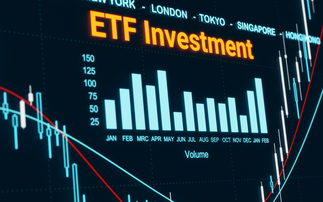
Chinese stocks are certainly experiencing tough times. Year-to-date, the FTSE China 30/18 Capped Net Index, a broadly diversified equity measure, is down nearly a quarter. It is also trading more than 40% below its all-time high less than one and a half years ago. For investors who are able to take a long-term view, however, we believe that it’s worth putting the situation into some context.
One of the biggest declines in over 20 years
We all know the past cannot predict the future, but that does not have to prevent us from consulting the past for some insights. The current drawdown is analytically interesting. We had a look at past instances of market corrections of 10% or more from the previous top. Between 2002 to 2021, there were a total of nine cases of drawdowns greater than 10%. Four of these instances exceeded losses of 20%, and there were three instances of market losses of more than 30%. With the exception of the crash during the Global Financial Crisis (GFC), we are currently going through the most severe decline in over twenty years. The losses are surpassing the bursting of the great speculative bubble in 2015/16 (-40.8%), and the Trump trade war jitters during 2018 (-30.4%).
At the same time, we must also recognize that, given current levels of volatility, an index value 10% higher or lower is almost inconsequential for long term investors. Case in point: from mid-March 2022 to early April, the index jumped nearly 25%, followed by a drop of 16% by the end of April. Only one week later, the market stood 10% higher yet again. These are eye-watering numbers and recovering just another 10% or so from today would bring the market well back into the "normal" historic drawdown range.
A recovery is overdue based on market behaviour in the past
Perhaps more interesting than the depth of the valley is the question regarding the peak-to-trough-time, or, in other words: when do things usually get better? There's good news and bad news. The bad news is that the current woes have already been more extended than any past instances. The good news is that - by the same logic, looking at the past for guidance - we are overdue a significant recovery. In those nine instances outlined above, the cycle low point occurred after around 22 weeks on average. Unsurprisingly, the deeper the loss, the longer it usually took for the market to actually bottom out. However, even during the GFC, when losses significantly exceeded today's, it took approximately 53 weeks - roughly one year - before equities commenced their turnaround. During this recent cycle, the preliminary trough was reached after 62 weeks. This may suggest we are on our way back up.
Past and current drawdowns; in % Peak-to-trough; in weeks
Source: Bloomberg, Franklin Templeton, 2022. Date range 05 May 2002 - 05 May 2022, based on the FTSE China 30/18 Capped Net Index, weekly data. Only drawdowns of 10% or more were considered.
Any fresh lows from this point forward could make the current episode something of an outlier (albeit insignificant in a statistical sense due to the small sample size).
In conclusion, while the current situation certainly represents one of the more severe bear markets in broad Chinese equities over the past 20 years, it's not exactly unprecedented either.
Current drawdown: not business as usual, but not unprecedented either
Source: Bloomberg, Franklin Templeton, 2022. In % from peak to trough, y axis, and weeks from peak to trough, x axis. Date range 05 May 2002 - 05 May 2022, based on the FTSE China 30/18 Capped Net Index, weekly data. Drawdowns shown are: Global Financial Crisis: 19/10/2007- 24/10/2008, 2015/16 bubble: 24/04/2015 - 12/02/2016, 2018 Trade War: 26/01/2018 - 26/10/2018, and current: 12/02/2021 - 22/04/2022 (preliminary)
Given that since 2020 we've been witnessing at least two events of world-changing proportions, the Covid-19 pandemic and the Russo-Ukrainian war, coupled with homemade problems in China, one could perhaps argue that the market has shown relative resilience. This will provide little comfort to investors sitting on heavy losses. But it may put things into perspective for those able and willing to look past short- term volatility and who believe in the long-term, fundamental case for Chinese equities.
This post was funded by Franklin Templeton
IMPORTANT LEGAL INFORMATION
This material is intended to be of general interest only and should not be construed as individual investment advice or a recommendation or solicitation to buy, sell or hold any security or to adopt any investment strategy. It does not constitute legal or tax advice. This material may not be reproduced, distributed, or published without prior written permission from Franklin Templeton. The views expressed are those of the investment manager and the comments, opinions and analyses are rendered as at publication date and may change without notice. The underlying assumptions and these views are subject to change based on market and other conditions and may differ from other portfolio managers or of the firm as a whole. The information provided in this material is not intended as a complete analysis of every material fact regarding any country, region or market. There is no assurance that any prediction, projection or forecast on the economy, stock market, bond market or the economic trends of the markets will be realized. The value of investments and the income from them can go down as well as up and you may not get back the full amount that you invested. Past performance is not necessarily indicative nor a guarantee of future performance. All investments involve risks, including possible loss of principal.
Any research and analysis contained in this material has been procured by Franklin Templeton for its own purposes and may be acted upon in that connection and, as such, is provided to you incidentally. Data from third party sources may have been used in the preparation of this material and Franklin Templeton ("FT") has not independently verified, validated or audited such data. Although information has been obtained from sources that Franklin Templeton believes to be reliable, no guarantee can be given as to its accuracy and such information may be incomplete or condensed and may be subject to change at any time without notice. The mention of any individual securities should neither constitute nor be construed as a recommendation to purchase, hold or sell any securities, and the information provided regarding such individual securities (if any) is not a sufficient basis upon which to make an investment decision. FT accepts no liability whatsoever for any loss arising from use of this information and reliance upon the comments, opinions and analyses in the material is at the sole discretion of the user.
Products, services and information may not be available in all jurisdictions and are offered outside the U.S. by other FT affiliates and/or their distributors as local laws and regulation permits. Please consult your own financial professional or Franklin Templeton institutional contact for further information on availability of products and services in your jurisdiction.
UK: Issued by Franklin Templeton Investment Management Limited (FTIML), registered office: Cannon Place, 78 Cannon Street, London EC4N 6HL. Tel: +44 (0)20 7073 8500. Authorized and regulated in the United Kingdom by the Financial Conduct Authority.
Please visit www.franklinresources.com to be directed to your local Franklin Templeton website.
Copyright © 2022 Franklin Templeton. All rights reserved.













